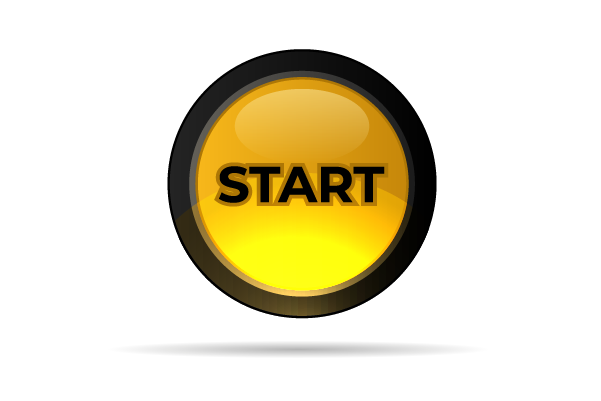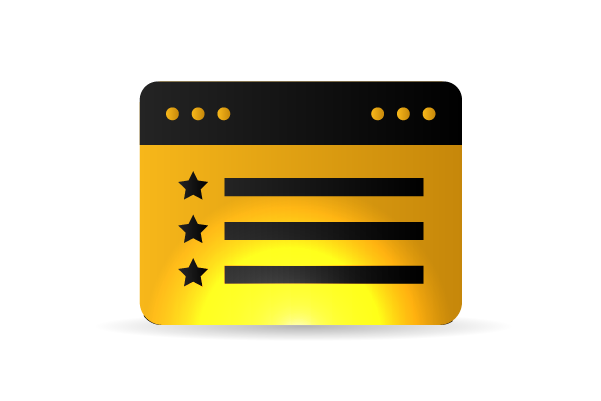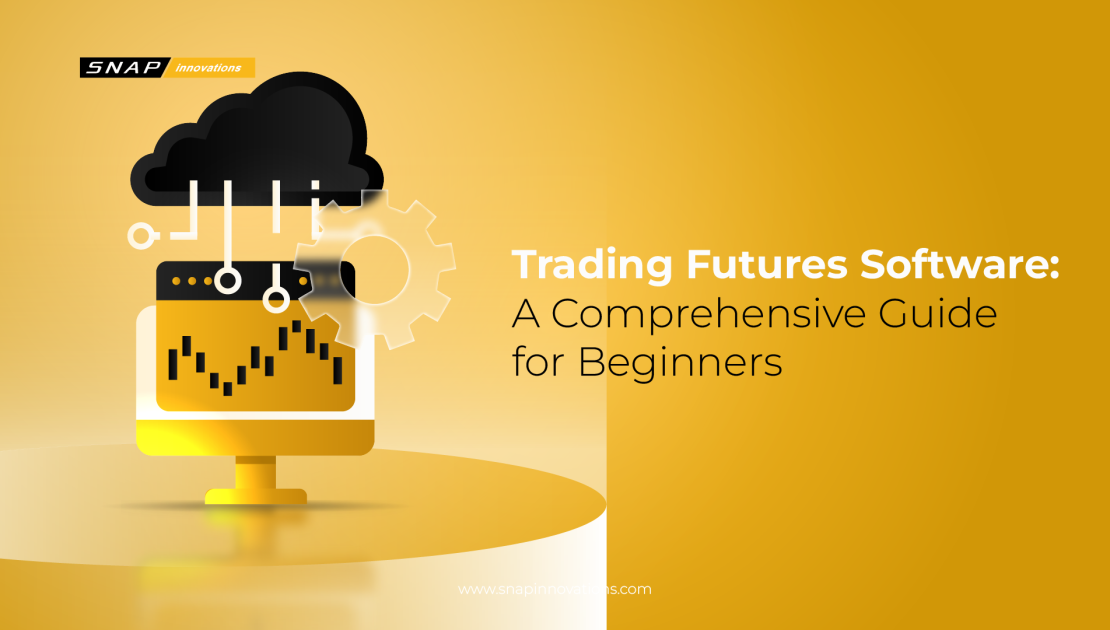Futures trading is a form of financial speculation where traders buy and sell contracts for assets to be delivered at a future date. These contracts, known as futures contracts, are agreements to buy or sell an asset at a predetermined price and date. The assets traded can range from commodities like oil and gold to financial instruments like currencies and stock indices.
Futures trading is attractive to many investors due to its potential for high returns and the ability to leverage positions. However, it also carries a high level of risk, making it essential for traders, especially beginners, to have a good understanding of the market and the tools available to them. One such essential tool is trading futures software, which can greatly enhance a trader’s ability to make informed decisions and execute trades efficiently.
What is Trading Futures Software?
 Trading futures software is a specialized application designed to facilitate the buying and selling of futures contracts. This software provides traders with a platform to access market data, analyze trends, execute trades, and manage their portfolios. It serves as an essential bridge between traders and the futures markets, offering various functionalities that are critical for successful trading.
Trading futures software is a specialized application designed to facilitate the buying and selling of futures contracts. This software provides traders with a platform to access market data, analyze trends, execute trades, and manage their portfolios. It serves as an essential bridge between traders and the futures markets, offering various functionalities that are critical for successful trading.
Types of Trading Futures Software
 There are different types of trading futures software available, each catering to various needs of traders. Choosing the right type of software depends on your trading style, preferences, and technical requirements. Here’s an expanded look at the main types of trading futures software:
There are different types of trading futures software available, each catering to various needs of traders. Choosing the right type of software depends on your trading style, preferences, and technical requirements. Here’s an expanded look at the main types of trading futures software:
Desktop-Based Software
Desktop-based software is installed directly on a trader’s computer. These platforms often provide the most robust set of features and tools, making them ideal for serious traders who need comprehensive analysis and trading capabilities.
- MetaTrader 5 (MT5): Known for its powerful analytical tools and user-friendly interface, MT5 supports automated trading through Expert Advisors (EAs) and offers a wide range of technical indicators. It’s a versatile platform suitable for various trading strategies.
- NinjaTrader: This professional-grade platform excels in advanced charting, market analysis, and automated trading. NinjaTrader’s backtesting capabilities and customizable features make it a favorite among traders who develop and test their own trading strategies.
- TradeStation: Offering advanced charting and analysis tools, TradeStation also includes a proprietary scripting language, EasyLanguage, for developing custom indicators and strategies. It’s highly regarded for its speed and reliability.
Web-Based Platforms
Web-based platforms allow traders to access their trading accounts and execute trades through a web browser, eliminating the need to install any software. These platforms offer flexibility and accessibility, making them ideal for traders who need to access their accounts from multiple devices.
- TradingView: Known for its powerful charting capabilities and social trading features, TradingView is a popular choice for traders who value community insights and easy access from any device. It supports a wide range of technical indicators and allows traders to share and discuss trading ideas.
- Webull: A commission-free trading platform that offers real-time data, advanced charting, and various research tools. Webull is user-friendly and accessible from any web browser, making it convenient for traders who prefer a straightforward trading experience.
- Interactive Brokers’ WebTrader: This platform offers comprehensive market data and trading tools accessible via a web browser. It’s designed for traders who need robust functionality without the hassle of software installation.
Read More: Top 7 Futures Trading Platforms for Beginners
Mobile Applications
Mobile applications are designed for trading on the go, providing essential features for futures trading. While they may have some limitations compared to desktop versions, they offer the convenience of managing trades from anywhere.
- Thinkorswim Mobile App: Offered by TD Ameritrade, this app provides a wide range of trading tools, including advanced charting, real-time data, and educational resources. It’s designed to offer a comprehensive trading experience on mobile devices.
- TD Ameritrade Mobile App: This app allows traders to access their accounts, place trades, and monitor the markets from their smartphones. It includes essential features such as watchlists, price alerts, and research tools, making it suitable for traders who need flexibility.
- MetaTrader 5 Mobile: Available for both Android and iOS, the MT5 mobile app offers a range of features, including real-time quotes, trading orders, and customizable charts. It’s ideal for traders who need to stay connected to the markets while on the move.
Each type of trading futures software has its own set of advantages and may cater to different trading needs and preferences. Whether you prefer the robust features of desktop software, the flexibility of web-based platforms, or the convenience of mobile applications, there is a solution to match your trading style and requirements.
Key Features of Futures Trading Software
 To succeed in futures trading, having the right software with the appropriate features is crucial. Here are some key features that beginners should look for in futures trading software:
To succeed in futures trading, having the right software with the appropriate features is crucial. Here are some key features that beginners should look for in futures trading software:
Real-Time Market Data
Access to real-time market data is vital for making informed trading decisions. Futures trading software should provide up-to-the-minute quotes, charts, and news updates. This feature ensures that traders can respond quickly to market movements and take advantage of trading opportunities as they arise.
Advanced Charting Tools
Advanced charting tools help traders analyze market trends and make predictions about future price movements. These tools typically include various types of charts (e.g., line, bar, and candlestick charts), technical indicators (e.g., moving averages, RSI, and MACD), and drawing tools for marking support and resistance levels.
Customizable Interface
A customizable interface allows traders to set up their trading environment according to their preferences. This might include arranging different windows and panels, setting up watchlists, and customizing chart layouts. A well-organized interface can improve trading efficiency and reduce the chances of making errors.
Automated Trading
Automated trading features enable traders to set predefined criteria for entering and exiting trades. The software can execute trades automatically based on these criteria, helping to remove emotion from trading decisions and ensure consistent execution of trading strategies.
Risk Management Tools
Effective risk management is essential in futures trading due to the high levels of leverage and potential for significant losses. Futures trading software should offer risk management tools such as stop-loss orders, take-profit orders, and margin alerts to help traders manage their risk and protect their capital.
Backtesting Capabilities
Backtesting allows traders to test their trading strategies using historical data to see how they would have performed in the past. This feature helps traders refine their strategies and gain confidence in their approach before risking real money in the market.
Order Types
The availability of various order types (e.g., market orders, limit orders, and stop orders) is crucial for executing different trading strategies. Futures trading software should support a wide range of order types to accommodate the needs of different traders.
Educational Resources
For beginners, educational resources are particularly valuable. Good futures trading software often includes tutorials, webinars, and articles that help new traders understand the software’s features and learn about trading strategies and market analysis.
Popular Futures Trading Software Options
 There are several futures trading software options available, each offering unique features and benefits. Here are some of the most popular and widely used futures trading platforms:
There are several futures trading software options available, each offering unique features and benefits. Here are some of the most popular and widely used futures trading platforms:
MetaTrader 5 (MT5)
MetaTrader 5 is a powerful and versatile trading platform that supports futures trading. It offers advanced charting tools, multiple order types, and automated trading capabilities through Expert Advisors (EAs). MT5 is known for its user-friendly interface and comprehensive market analysis tools, making it a popular choice among both beginners and experienced traders.
NinjaTrader
NinjaTrader is a professional-grade trading platform that is highly regarded for its advanced charting, backtesting capabilities, and automated trading features. It offers a range of tools for market analysis and strategy development, making it ideal for traders who want to build and test custom trading strategies. NinjaTrader also provides access to a large community of traders and developers who share insights and tools.
Thinkorswim by TD Ameritrade
Thinkorswim is a feature-rich trading platform offered by TD Ameritrade. It provides a comprehensive suite of tools for futures trading, including real-time data, advanced charting, and a wide variety of technical indicators. Thinkorswim also offers paper trading, which allows beginners to practice trading without risking real money. Its robust educational resources and strong customer support make it an excellent choice for new traders.
TradeStation
TradeStation is a highly regarded trading platform that offers powerful tools for futures trading. It provides advanced charting, a wide range of order types, and automated trading capabilities. TradeStation’s proprietary EasyLanguage scripting language allows traders to create custom indicators and strategies. The platform also offers extensive educational resources and a supportive trading community.
TradingView
TradingView is a web-based platform known for its user-friendly interface and powerful charting capabilities. It offers real-time market data, a vast array of technical indicators, and social trading features that allow users to share and discuss trading ideas. TradingView is accessible from any device with an internet connection, making it a convenient option for traders who need flexibility.
CQG
CQG is a professional-grade trading platform used by institutional and retail traders alike. It offers advanced charting, real-time data, and a range of analytical tools. CQG is known for its robust infrastructure and fast execution speeds, making it a reliable choice for high-frequency traders. The platform also supports automated trading and provides access to a global network of futures exchanges.
Interactive Brokers’ Trader Workstation (TWS)
Interactive Brokers’ Trader Workstation (TWS) is a comprehensive trading platform that supports futures trading. It offers advanced charting tools, a variety of order types, and sophisticated risk management features. TWS is known for its low-cost structure and access to a wide range of markets. The platform also provides extensive educational resources and customer support.
Tips for Getting Started with Futures Trading Software
Starting with futures trading software can be an exciting yet challenging experience for beginners. Here are some tips to help you get started on the right foot:
Begin with a Demo Account
Most futures trading platforms offer demo accounts that allow you to practice trading with virtual money. Using a demo account is an excellent way to familiarize yourself with the software’s features, test different trading strategies, and build confidence without risking real money.
Educate Yourself
Take advantage of the educational resources provided by your trading platform. These may include tutorials, webinars, articles, and videos. Understanding the basics of futures trading, market analysis, and risk management is crucial for success. Additionally, many platforms offer simulated trading environments where you can practice and refine your skills.
Start Small
When you are ready to trade with real money, start with small positions to manage risk effectively. As a beginner, it’s important to gain experience and build your trading skills before committing large amounts of capital. Starting small allows you to learn from your mistakes without significant financial consequences.
Develop a Trading Plan
Having a clear trading plan is essential for success in futures trading. Your plan should outline your trading goals, risk tolerance, preferred trading strategies, and criteria for entering and exiting trades. A well-defined trading plan helps you stay disciplined and reduces the likelihood of making impulsive decisions.
Use Risk Management Tools
Effective risk management is crucial in futures trading. Make use of the risk management tools provided by your trading software, such as stop-loss orders and take-profit orders. These tools help you limit potential losses and secure profits, ensuring that you protect your trading capital.
Read More: Top 10 Blockchain Consulting Firms to Know in 2024
Monitor Market Conditions
Stay informed about the market conditions and factors that can influence the prices of the assets you are trading. Economic indicators, geopolitical events, and market sentiment can all impact futures prices. Regularly monitoring the news and market analysis can help you make informed trading decisions.
Keep a Trading Journal
Maintaining a trading journal is a valuable practice for tracking your trades and analyzing your performance. Record the details of each trade, including the reasons for entering and exiting, the outcomes, and any lessons learned. Reviewing your journal regularly can help you identify patterns, improve your strategies, and avoid repeating mistakes.
Stay Disciplined
Discipline is key to successful futures trading. Stick to your trading plan, avoid emotional decision-making, and be patient. It’s important to recognize that not every trade will be profitable, and maintaining a disciplined approach will help you manage losses and stay focused on your long-term goals.
Continuously Improve
Futures trading is a dynamic and ever-evolving field. Continuously seek to improve your knowledge and skills by staying updated with the latest market trends, learning from experienced traders, and refining your strategies. The more you learn and adapt, the better your chances of success.
Conclusion
Futures trading can be a rewarding but complex endeavor, especially for beginners. Utilizing the right futures trading software is crucial for navigating this challenging market effectively. Such software offers essential features like real-time market data, advanced charting tools, and automated trading capabilities, all of which can significantly enhance a trader’s ability to make informed decisions and execute trades efficiently.
When choosing futures trading software, consider your trading needs, the platform’s features, reliability, security, cost, and available customer support. Popular platforms like MetaTrader 5, NinjaTrader, Thinkorswim, TradeStation, TradingView, CQG, and Interactive Brokers’ Trader Workstation offer a range of tools and resources that can cater to different trading styles and preferences.

